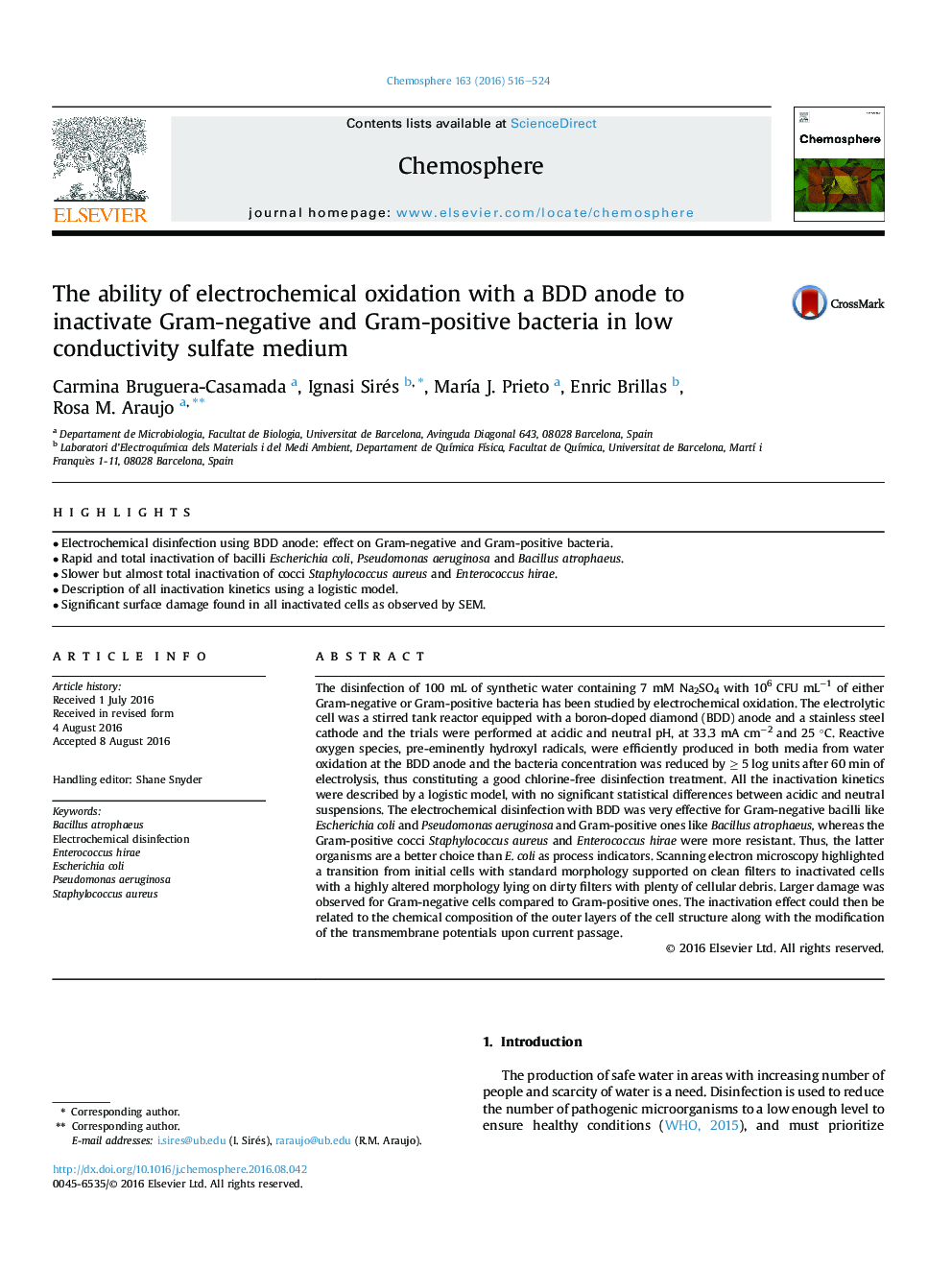| Article ID | Journal | Published Year | Pages | File Type |
|---|---|---|---|---|
| 6306352 | Chemosphere | 2016 | 9 Pages |
Abstract
The disinfection of 100 mL of synthetic water containing 7 mM Na2SO4 with 106 CFU mLâ1 of either Gram-negative or Gram-positive bacteria has been studied by electrochemical oxidation. The electrolytic cell was a stirred tank reactor equipped with a boron-doped diamond (BDD) anode and a stainless steel cathode and the trials were performed at acidic and neutral pH, at 33.3 mA cmâ2 and 25 °C. Reactive oxygen species, pre-eminently hydroxyl radicals, were efficiently produced in both media from water oxidation at the BDD anode and the bacteria concentration was reduced by â¥Â 5 log units after 60 min of electrolysis, thus constituting a good chlorine-free disinfection treatment. All the inactivation kinetics were described by a logistic model, with no significant statistical differences between acidic and neutral suspensions. The electrochemical disinfection with BDD was very effective for Gram-negative bacilli like Escherichia coli and Pseudomonas aeruginosa and Gram-positive ones like Bacillus atrophaeus, whereas the Gram-positive cocci Staphylococcus aureus and Enterococcus hirae were more resistant. Thus, the latter organisms are a better choice than E. coli as process indicators. Scanning electron microscopy highlighted a transition from initial cells with standard morphology supported on clean filters to inactivated cells with a highly altered morphology lying on dirty filters with plenty of cellular debris. Larger damage was observed for Gram-negative cells compared to Gram-positive ones. The inactivation effect could then be related to the chemical composition of the outer layers of the cell structure along with the modification of the transmembrane potentials upon current passage.
Keywords
Related Topics
Life Sciences
Environmental Science
Environmental Chemistry
Authors
Carmina Bruguera-Casamada, Ignasi Sirés, MarÃa J. Prieto, Enric Brillas, Rosa M. Araujo,
